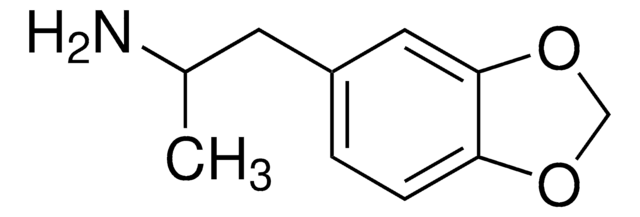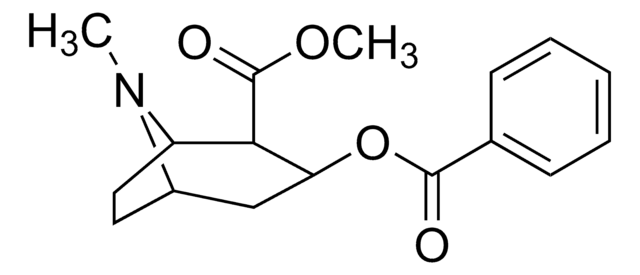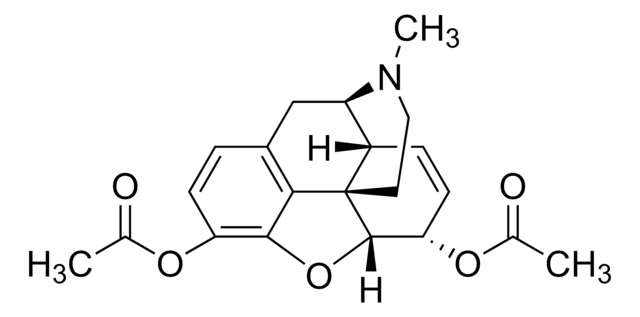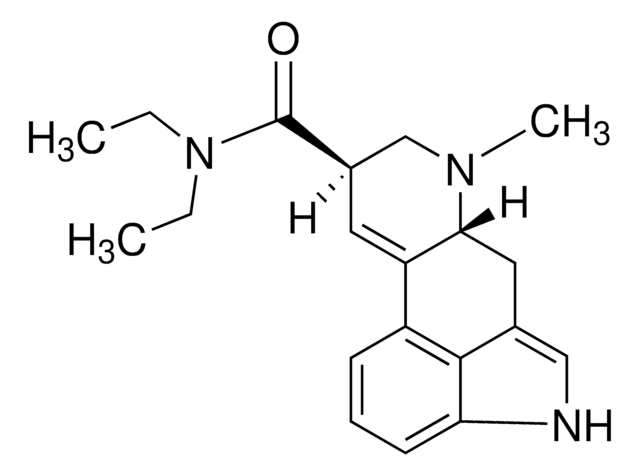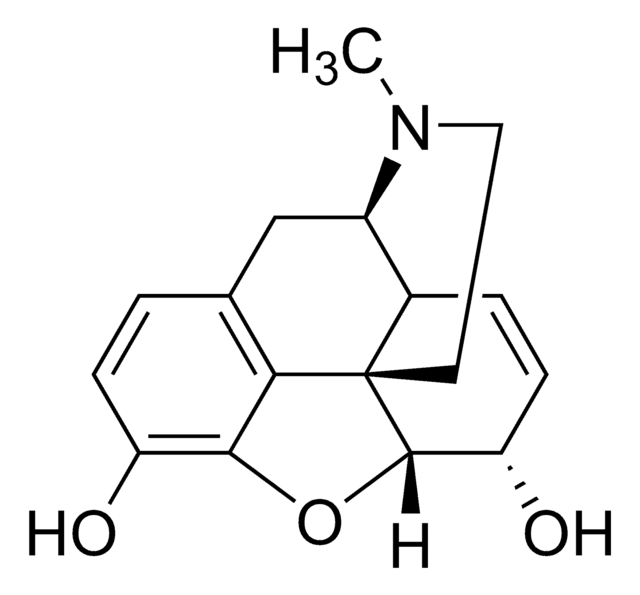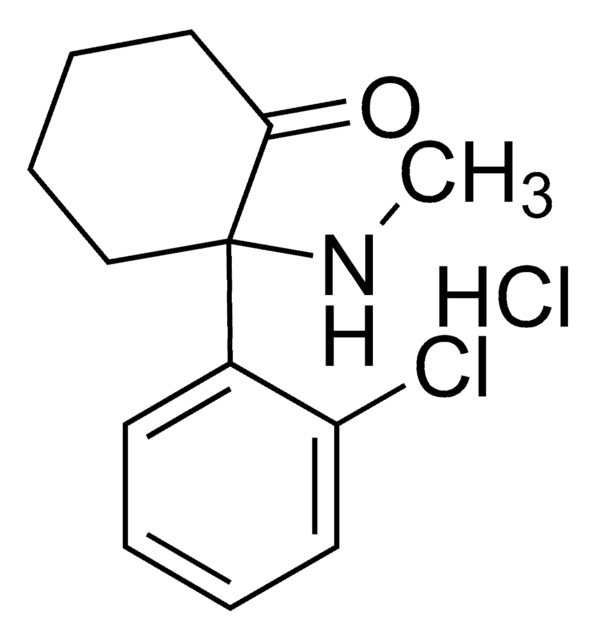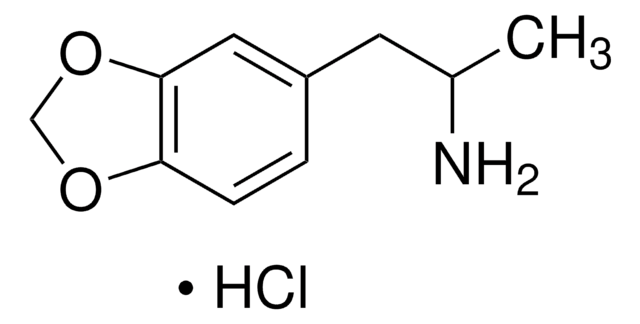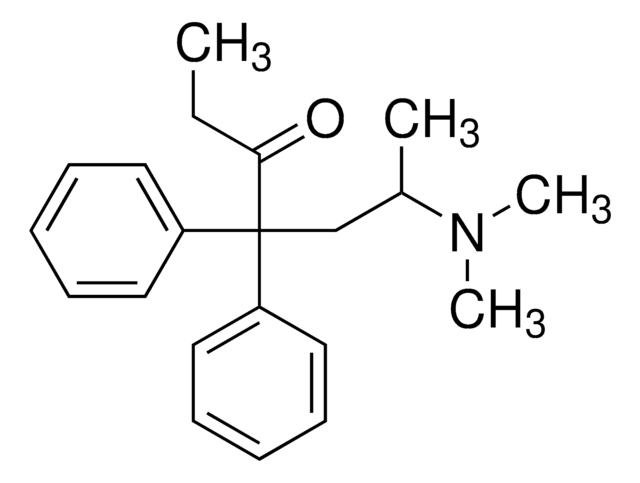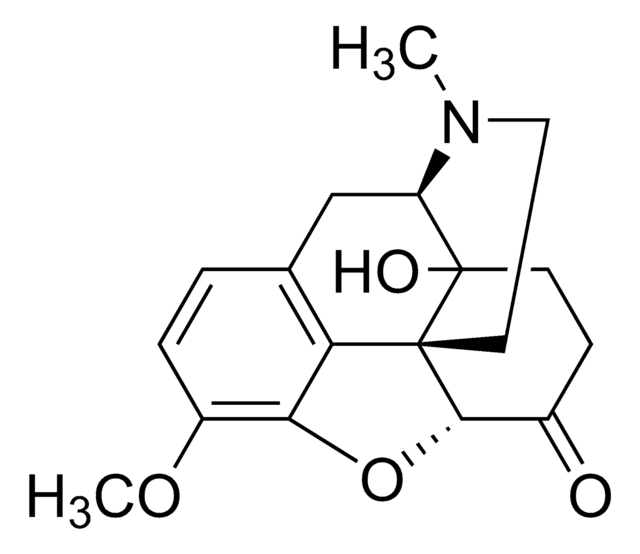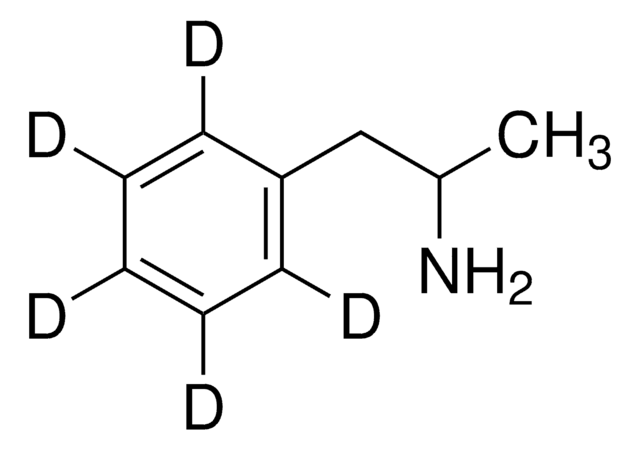M-013
(±)-MDMA solution
1.0 mg/mL in methanol, ampule of 1 mL, certified reference material, Cerilliant®
Sinónimos:
(±)-3,4-Methylenedioxymethamphetamine
About This Item
Productos recomendados
grado
certified reference material
Nivel de calidad
formulario
liquid
Características
Snap-N-Spike®/Snap-N-Shoot®
envase
ampule of 1 mL
fabricante / nombre comercial
Cerilliant®
drug control
Narcotic Licence Schedule D (Switzerland); psicótropo (Spain); Decreto Lei 15/93: Tabela IIA (Portugal)
concentración
1.0 mg/mL in methanol
técnicas
gas chromatography (GC): suitable
liquid chromatography (LC): suitable
aplicaciones
forensics and toxicology
formato
single component solution
temp. de almacenamiento
−20°C
cadena SMILES
CC(CC1=CC=C(OCO2)C2=C1)NC
InChI
1S/C11H15NO2/c1-8(12-2)5-9-3-4-10-11(6-9)14-7-13-10/h3-4,6,8,12H,5,7H2,1-2H3
Clave InChI
SHXWCVYOXRDMCX-UHFFFAOYSA-N
Descripción general
(±)-3,4-Methylenedioxymethamphetamine (MDMA) belongs to the class of racemic amphetamine-type stimulant drugs. It has psychoactive properties and is an active ingredient of the synthetic hallucinogenic drug, ecstasy. It is an illicit drug known by a variety of street names, including "Ecstasy," "E," "X," and "XTC". An analog of the phenethylamine class, MDMA is abused for its euphoric and psychedelic effects.
Aplicación
- Electrochemical detection of morphine and MDMA from human serum and urine samples using a sensitive sensor based on platinum nanoparticles deposited on carbon nanohorns (CNHs)
- Enantiomeric assessment of seized drugs of amphetamine, methamphetamine, and MDMA by two methods of liquid chromatography coupled with tandem mass spectrometry (MS/MS) and diode array detector (DAD)
- Development and validation of a stereoselective liquid chromatography-tandem mass spectrometric (LC-MS/MS) procedure for the analysis of MDMA and its metabolites in human plasma samples
- Matrix-assisted laser desorption/ionization triple quadrupole tandem mass spectrometric (MALDI-QqQ-MS/MS) based analysis of MDMA and its metabolite 3,4-methylenedioxyamphetamine in oral fluid samples
- Differential pulse voltametric (DPV) identification and quantification of MDMA in seized drug samples using boron-doped diamond electrode (BDDE)
Características y beneficios
- Fully characterized under ISO/IEC 17025 and ISO 17034 accreditation
- Accompanied with a comprehensive Certificate of Analysis (CoA) with data on stability, homogeneity, accuracy of concentration, uncertainty, and traceability
- Rigorously tested through real-time stability studies to ensure accuracy and shelf life
- Gravimetrically prepared using qualified precision balances to ensure minimal uncertainty
- Flame sealed under argon into ampoules for long-term shelf life
- Offered in a convenient, DEA-exempt format to improve laboratory efficiency
Productos recomendados
Información legal
Producto relacionado
Palabra de señalización
Danger
Frases de peligro
Consejos de prudencia
Clasificaciones de peligro
Acute Tox. 3 Dermal - Acute Tox. 3 Inhalation - Acute Tox. 3 Oral - Flam. Liq. 2 - STOT SE 1
Órganos de actuación
Eyes,Central nervous system
Código de clase de almacenamiento
3 - Flammable liquids
Clase de riesgo para el agua (WGK)
WGK 2
Punto de inflamabilidad (°F)
49.5 °F - closed cup
Punto de inflamabilidad (°C)
9.7 °C - closed cup
Certificados de análisis (COA)
Busque Certificados de análisis (COA) introduciendo el número de lote del producto. Los números de lote se encuentran en la etiqueta del producto después de las palabras «Lot» o «Batch»
¿Ya tiene este producto?
Encuentre la documentación para los productos que ha comprado recientemente en la Biblioteca de documentos.
Los clientes también vieron
Nuestro equipo de científicos tiene experiencia en todas las áreas de investigación: Ciencias de la vida, Ciencia de los materiales, Síntesis química, Cromatografía, Analítica y muchas otras.
Póngase en contacto con el Servicio técnico